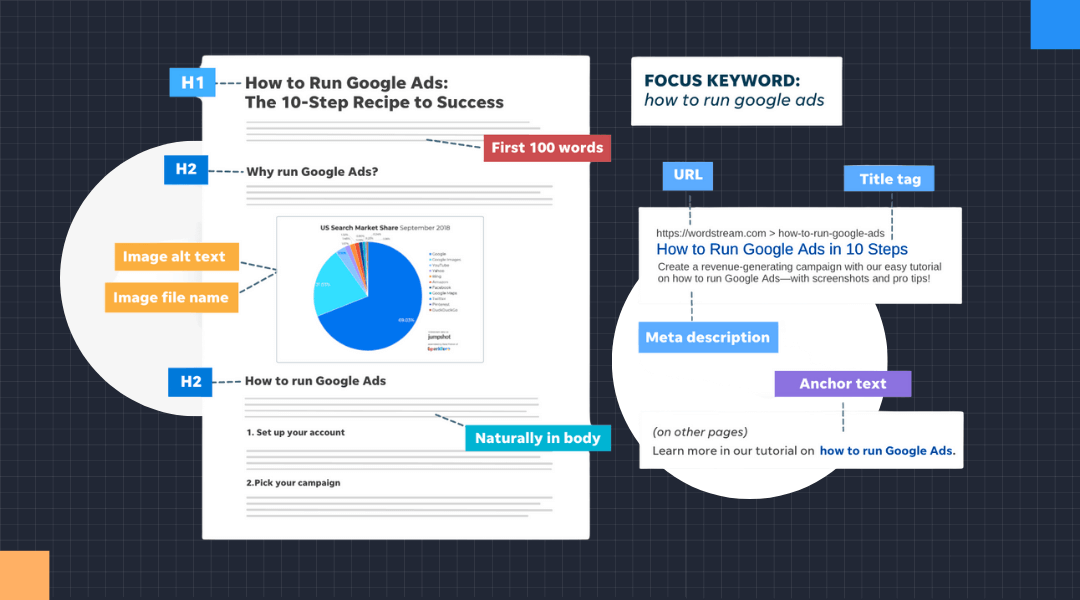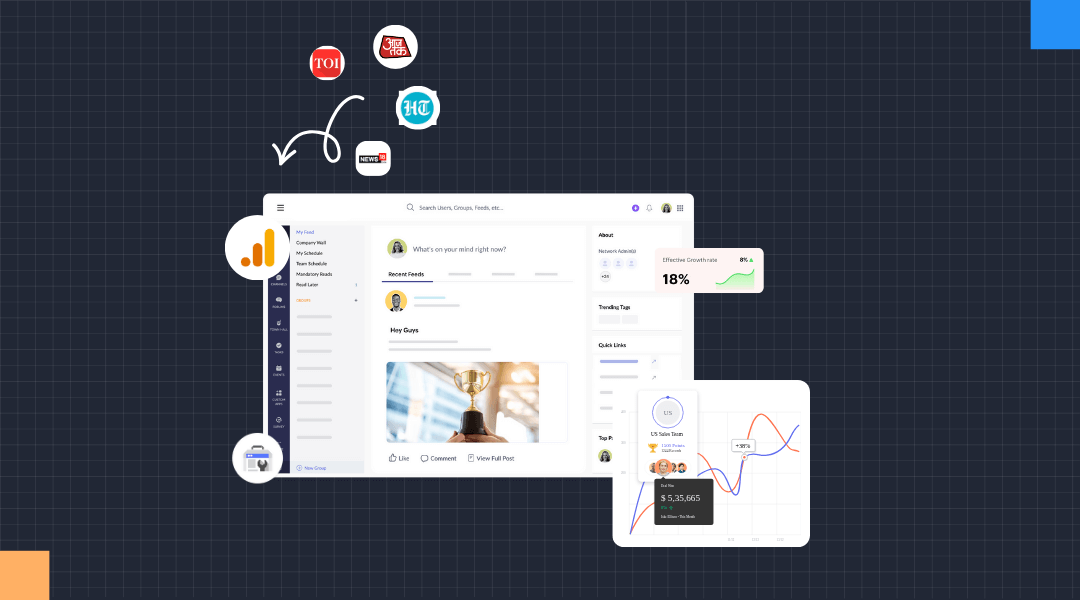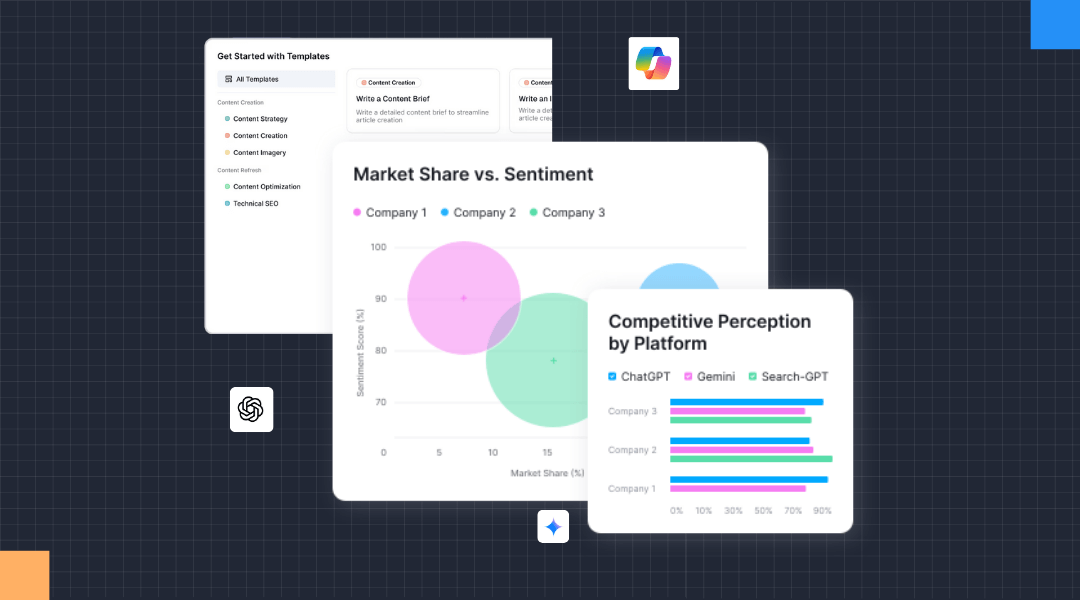Let’s be honest.
Most on-page SEO advice is stuck in 2015.
It’s all about keyword density, stuffing keywords in your alt text, and “optimizing” your title tags 100 times.
Here’s the deal:
That stuff barely matters anymore.
Why?
Because in 2026, Google is an answer engine. And the rise of AI Overviews has fundamentally changed the game.
Today, your on-page strategy has two goals:
-
Satisfy the user’s intent so completely they have no reason to click “back.”
-
Be so clear and authoritative that AI cites you as the source.
If your on-page SEO doesn’t do that, you’re invisible.
In this guide, I’ll show you the exact, actionable on-page strategies our team at seoagency.in is using to get our clients results right now.
Let’s dive in.
Chapter 1: The New Foundation: From Keywords to “Intent Satisfaction”
For years, we were all taught to build our pages around a single “focus keyword.”
Not anymore.
Today, the #1 goal of on-page SEO is Search Intent Satisfaction.
Think about it:
When someone searches for “best running shoes,” they don’t want a 5,000-word history of Nike.
They want a comparison. They want reviews. They want prices.
If your page doesn’t deliver that, you will fail.
Before you write a single word, search your target keyword on Google and analyze the top 3 results.
Ask yourself:
-
What kind of content is this? (Blog post? E-commerce category page? A review?)
-
What’s the format? (A listicle? A step-by-step guide? A “vs.” comparison?)
-
What questions do they answer? (Look at their H2s and H3s.)
The content you create must match this dominant intent.
This leads us to the exact framework we use…
Chapter 2: “The Complete Answer Framework™”
This is the technique we developed to ensure our content doesn’t just match user intent—it completely satisfies it.
It’s simple, and it works like crazy.
Here’s the 3-step process:
Step 1: Identify the Core Question
Your target keyword is the core question. If the keyword is “SaaS SEO,” the core question is “What is SaaS SEO and how do I do it?”
Step 2: Find the Follow-Up Questions
This is where the magic happens.
Go to Google and look at the “People Also Ask” (PAA) box.
These are the exact follow-up questions your audience is asking.
For “SaaS SEO,” you’ll see:
-
“How is SaaS SEO different from regular SEO?”
-
“What are the best keywords for SaaS?”
-
“How do you measure SEO for a SaaS company?”
Step 3: Build Your Blueprint
Your content outline is now 80% done.
Your H2s and H3s should directly answer the core question AND all the follow-up questions from the PAA box.
When you do this, you create a single page that answers the user’s initial query and every question they might have next.
This is how you get Google to see your page as the ultimate, “one-stop-shop” resource. This signals to them that your result is the best possible answer.
Chapter 3: The 2026 Layer: Optimizing for AI Overviews
This is the part most “SEO experts” are still missing.
On-page SEO isn’t just for the 10 blue links anymore. It’s for the AI Overview box that sits above them.
Your goal is to be cited by the AI.
How?
AI models are trained to find and present facts. Your job is to make your content as “cite-worthy” as possible.
Here’s how to optimize for AI Overview
Be Factual and Direct: Answer questions in a clear, concise, and factual way. Avoid fluff and opinion-based language when answering a direct query.
-
Use Data and Stats: Include “cite-worthy” statistics and data points. For example, “We saw a 180% increase in organic revenue…”
-
Create “Key Takeaway” Boxes: We do this in almost all of our posts. It’s a simple box at the top of the article that summarizes the key points. This is a perfect snippet for an AI to grab.
-
Structure Your Content (Again): That Q&A format from Chapter 2? It’s not just good for humans; it’s exactly what AI is looking for.
When you spoon-feed AI the exact, factual answers it needs, you position your content as a foundational source of truth.
Chapter 4: The Basics That Still Crush It (When Done Right)
Look, the fundamentals still matter.
But they’ve evolved. Here’s the 2026 version of the “basics.”
Title Tags: Your Ad on Google
Your title tag is no longer just a place to stuff your keyword.
It’s your #1 tool for winning the click. A high click-through rate (CTR) is a massive ranking signal.
Actionable Step: Use brackets or parentheses in your title. Our own studies have shown this can increase clicks by over 30%.
-
Weak:
On-Page SEO Tips -
Strong:
On-Page SEO: 7 Actionable Tips (for 2026)
URLs: Short and Sweet
Google has stated that they prefer short, simple URLs.
-
Bad:
seoagency.in/blog/2026/01/my-new-post-on-page-seo -
Good:
seoagency.in/on-page-seo
Internal Linking: Your Secret Weapon
This is easily the most powerful on-page tactic most people ignore.
Internal links (links from one page on your site to another) do two things:
-
They help Google find and index your new content faster.
-
They pass authority (or “link juice”) from your powerful pages to your new pages.
Actionable Step: When you publish a new blog post, find 2-3 older, high-authority pages on your site (like your homepage or a popular guide) and add an internal link from those pages to your new post.
This sends a flood of authority to your new page right away.
Chapter 5: Proving Your E-E-A-T (On the Page)
Finally, you need to prove your E-E-A-T (Experience, Expertise, Authoritativeness, Trustworthiness) on the page itself.
This is especially true for YMYL (Your Money Your Life) topics, but it’s now a critical signal for all content.
You can’t just say you’re an expert; you have to show it.
1. Create Detailed Author Bios Don’t just put “By Vedant Vyas.” Create a full author box at the end of your post.
-
Show the author’s headshot.
-
Include their credentials and experience.
-
Link to their LinkedIn or other verifiable social profiles.
2. Use Advanced Schema Markup This is the technical backend of E-E-A-T. Use Person schema to tell Google who the author is and connect them to their other online profiles. Use Organization schema to establish your brand as a legitimate entity.
3. Link Out to Authoritative Sources A lot of people are afraid to link out. Don’t be. Linking out to high-authority studies, reports, and news articles shows Google that your content is well-researched and part of the larger web conversation. It actually boosts your trustworthiness.
Conclusion
On-page SEO in 2026 is a new game.
It’s not about tricking algorithms.
It’s about creating a comprehensive, authoritative, and technically sound experience that satisfies users and is easy for AI to understand.
Focus on the “Complete Answer Framework,” optimize for AI citations, and prove your E-E-A-T on the page, and you’ll be ahead of 90% of your competition.
Now I’d Like to Hear From You…
That’s my complete guide to modern on-page SEO.
Now I want to turn it over to you:
Which of these strategies are you going to try first?
Are you going to implement the “Complete Answer Framework”? Or are you going to focus on optimizing for AI Overviews?


